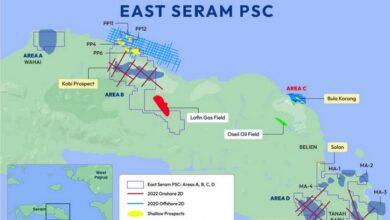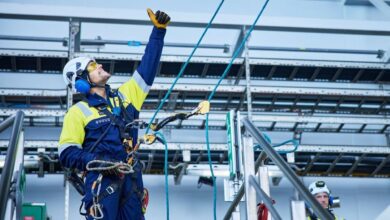Danish safety regulator: One-door solution to help contractors focus on safety, not paperwork

By Linda Hsieh, Managing Editor
Danish regulators want the drilling industry to deliver zero incidents while operating offshore Denmark, and they’re eager to help us get there. That’s why Denmark has set up its competent authority, which is being required by the EU Offshore Safety Directive, as a one-door solution. “Hopefully it means that you will submit your application for permit to operate in the Danish sector to the Offshore Safety Unit, and then we will make sure to collect the relevant approvals from the Danish Environmental Protection Agency,” Katrine Krone, Head of Section for the Danish Working Environment Authority, said to attendees of the 2015 IADC Drilling HSE&T Europe Conference on 24 September in Amsterdam. “That’s one way of trying to help you focus on safety instead of drowning in administration.”
In response to the Safety Directive, Denmark has set up its competent authority to encompass the Danish Working Environment Authority, the Offshore Safety Unit and the Danish Environmental Protection Agency. “You will still have to go to the Danish Maritime Authority and get them to look at the maritime part, but that’s no different from today,” she said. “But from a safety and environmental perspective, you will just have to go through one door.”
Ms Krone praised the industry for positive results she’s already seen – the industry went from having five work-related incidents on rigs in 2010 to only two such incidents in 2014. “In 2014, the number of working hours on rigs in the Danish part of the North Sea was 1.9 million manhours, leaving us with a frequency of less than one incident per 1 million manhours. That’s quite good,” she acknowledged.
And yet, it’s not enough. Her ambition, she explained, is zero incidents. “You could argue, is zero even possible? And my answer is, it should be, and some of you know that it is,” Ms Krone commented. “In my opinion, it all comes down to working together, learning from each other, practicing safety leadership and handling the human factor. But the great thing is that I’m sure you share the same ambition.”
To illustrate the kind of safety culture she’s after, Ms Krone shared a story that Australian mountaineer Patrick Hollingworth told last year during a Danish safety conference. Mr Hollingworth and his team had been preparing for years to climb a particularly harsh mountain. During the climb, just 200 meters before reaching the top, they recognized that it was not safe to continue and decided to stop and turn around. “They had been preparing for years, it was only 200 meters, and they knew they probably wouldn’t get the chance to go there again,” Ms Krone said. “But still, they decided it wasn’t safe to go, and they turned around. To me, that’s the perfect image of what safety culture is all about.”
Going forward, Ms Krone noted that her team will rely on personal engagement to continue improving safety. This means she doesn’t want the industry to do what the safety regulator says just because they said so. “Please make sure that you find our input relevant and useful and that you think our input will help you to improve safety.”
One example where such engagement has worked is the workplace assessment, which is required on every fixed installation in the Danish part of the North Sea. “What we have done over the past couple of years is try to illustrate to contractors entering Danish waters the advantages of such a workplace assessment. We’ve done this through dialogue and examples, not through regulation,” she said. “What we see is that more and more companies actually keep the workplace assessment and use it as an important tool in the continuous effort to improve safety even after having left Danish waters.”
Ms Krone and her team are also currently analyzing Danish regulations around rigs to determine if those rules are stricter than what’s required under EU regulations and, if so, why. “Obviously it is too soon to tell what we will find, but we hope to present the analysis in the beginning of next year.” DC




